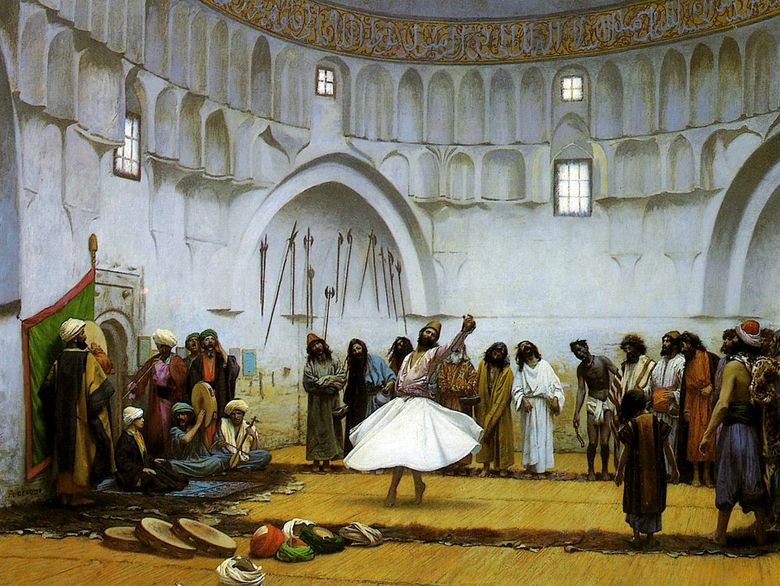
The dervish is the same as the “calandar” or “calender” – a Muslim analogue of a monk, an ascetic, an adherent of Sufism. Dervishes are wandering and living in the abodes under the sheikh – the guardian of order and the charter of the community. The dervishes who lived in the dwellings often wandered, feeding on mundane alms, but periodically returning for joint fasts and prayers.
In some cities of Central Asia, for the dervishes to live, the city authorities for public funds or private donations built khanaka. A distinctive feature of the dervish was the lack of property. Dervish did not have to say, for example, “my shoes” or “my this and that and that” – he should not have property, because everything belongs to God.
If the dervish possessed something, then he was obliged to share it. If the dervish did not live in poverty, he compensated for this with generosity and hospitality, when he was ready to give everything to his guest, leaving nothing for himself or even his family. Sometimes dervishes are considered to be monks – but this is debatable, since the resemblance is purely external, since dervishes could marry, have their own homes and live their own lives. Artist: Jerome Jean Leon
 Interior of the Mosque by Jean-Leon Jerome
Interior of the Mosque by Jean-Leon Jerome Women harem fed pigeons by Jean Leon Jerome
Women harem fed pigeons by Jean Leon Jerome Moses on Mount Sinai by Jean-Leon Jerome
Moses on Mount Sinai by Jean-Leon Jerome View of Cairo by Jean-Leon Jerome
View of Cairo by Jean-Leon Jerome Auction slaves by Jean Leon Jerome
Auction slaves by Jean Leon Jerome Turkish bath in the harem by Jean Leon Jerome
Turkish bath in the harem by Jean Leon Jerome Tourbillonner les derviches – Jean Leon Jerome
Tourbillonner les derviches – Jean Leon Jerome Turkish girl and Mauritanian bath by Jean Leon Jerome
Turkish girl and Mauritanian bath by Jean Leon Jerome